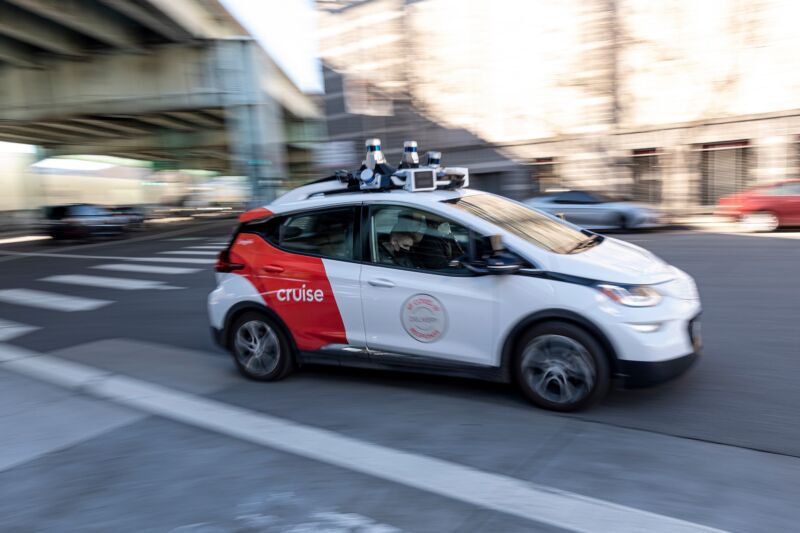
Enlarge / A Cruise vehicle on the streets of San Fransisco. (credit: David Paul Morris/Bloomberg/Getty Images)
The National Highway Traffic Safety Administration is looking into Cruise's robotaxis after several crashes involving the autonomous vehicles being rear-ended. NHTSA's Office of Defects Investigation has opened an investigation into the General Motors-backed autonomous driving startup's automated driving system and a possible propensity to brake inappropriately hard if another vehicle approaches quickly from behind. NHTSA's ODI is also looking into incidents where Cruise's AVs have stopped and become immobile road hazards.
Cruise is one of the leading AV developers, and along with Alphabet's Waymo, it has deployed actual driverless robotaxis, albeit on a small scale so far. It's developing a futuristic box-on-wheels called the Origin, which it hopes to have running on the road sans steering wheel in 2023. But for now, the company is testing on the streets of San Francisco with modified Chevrolet Bolt EVs.
There have been a few scrapes and bumps along the way, and earlier this year, footage went viral of a Cruise AV appearing to drive away from a traffic stop after being pulled over for not having its headlights on at night.
No comments:
Post a Comment